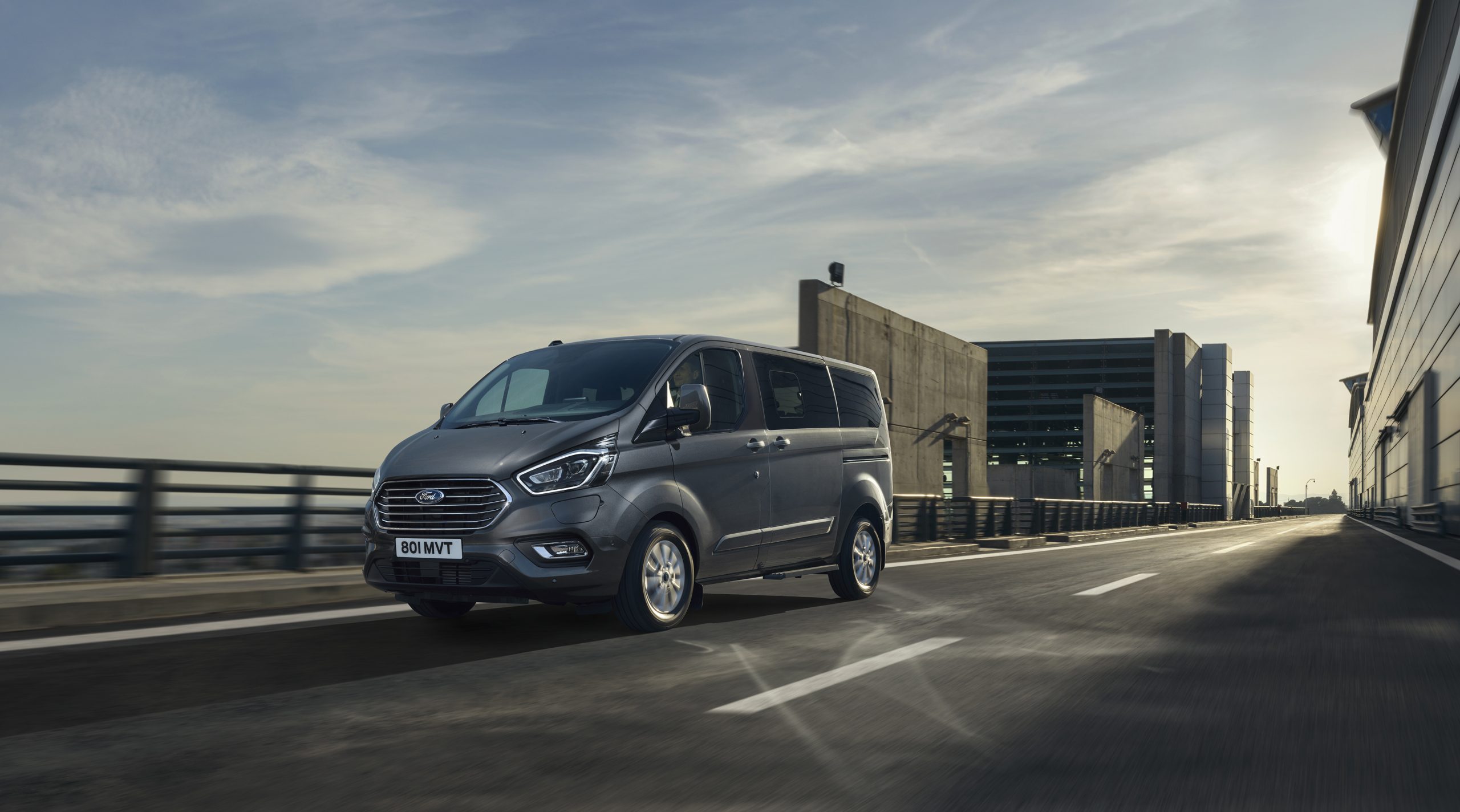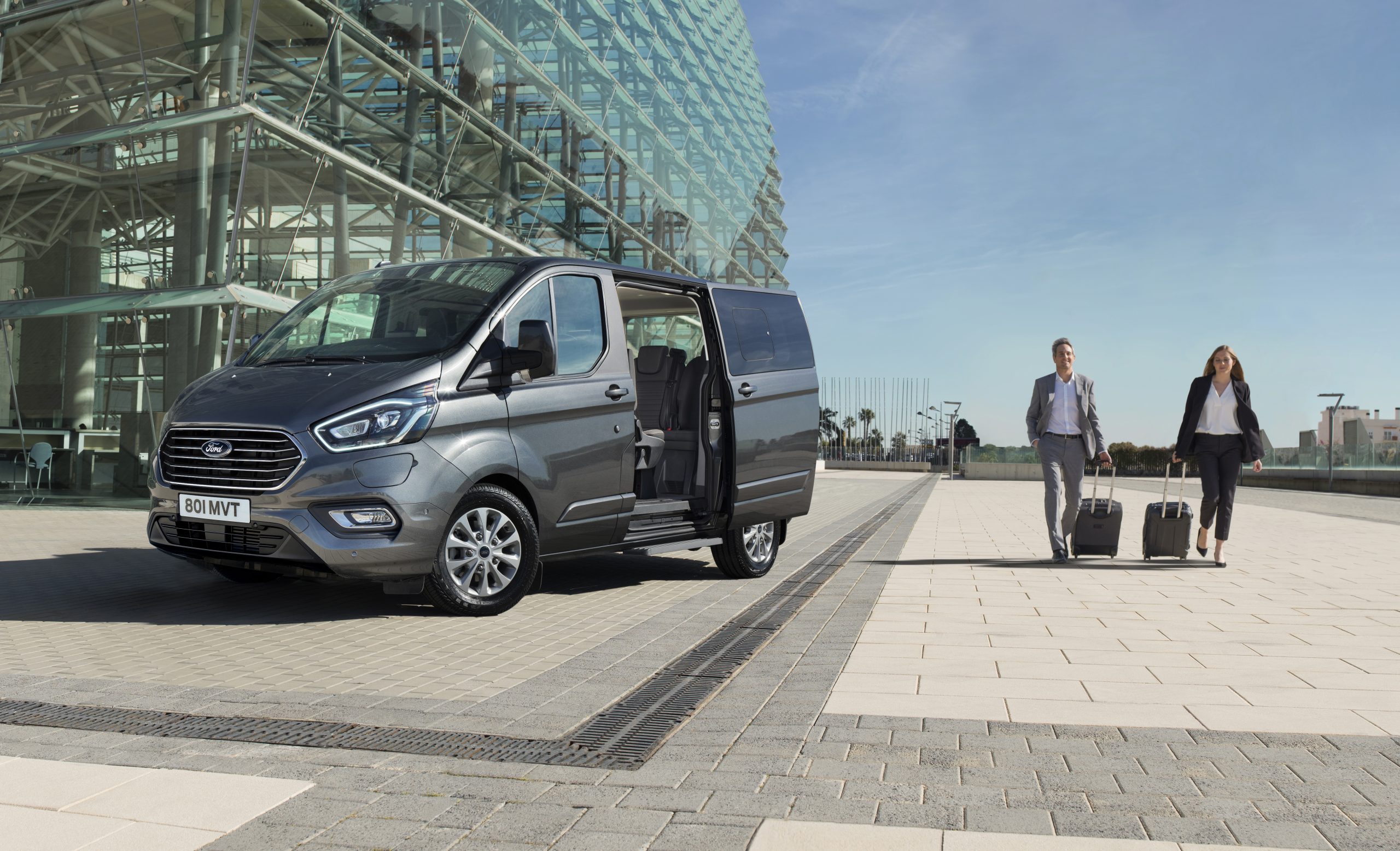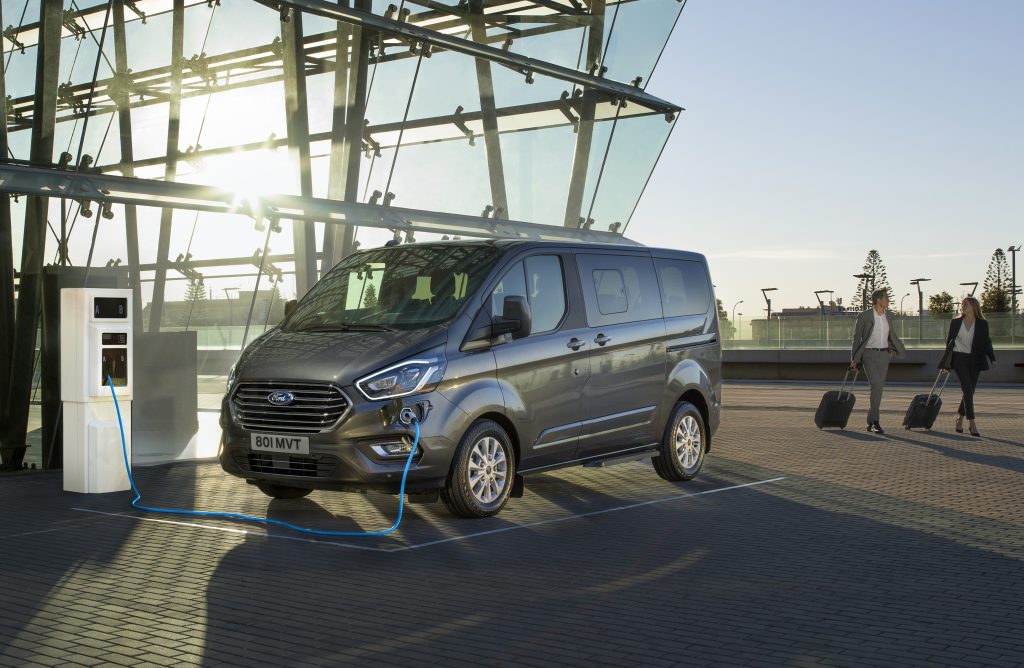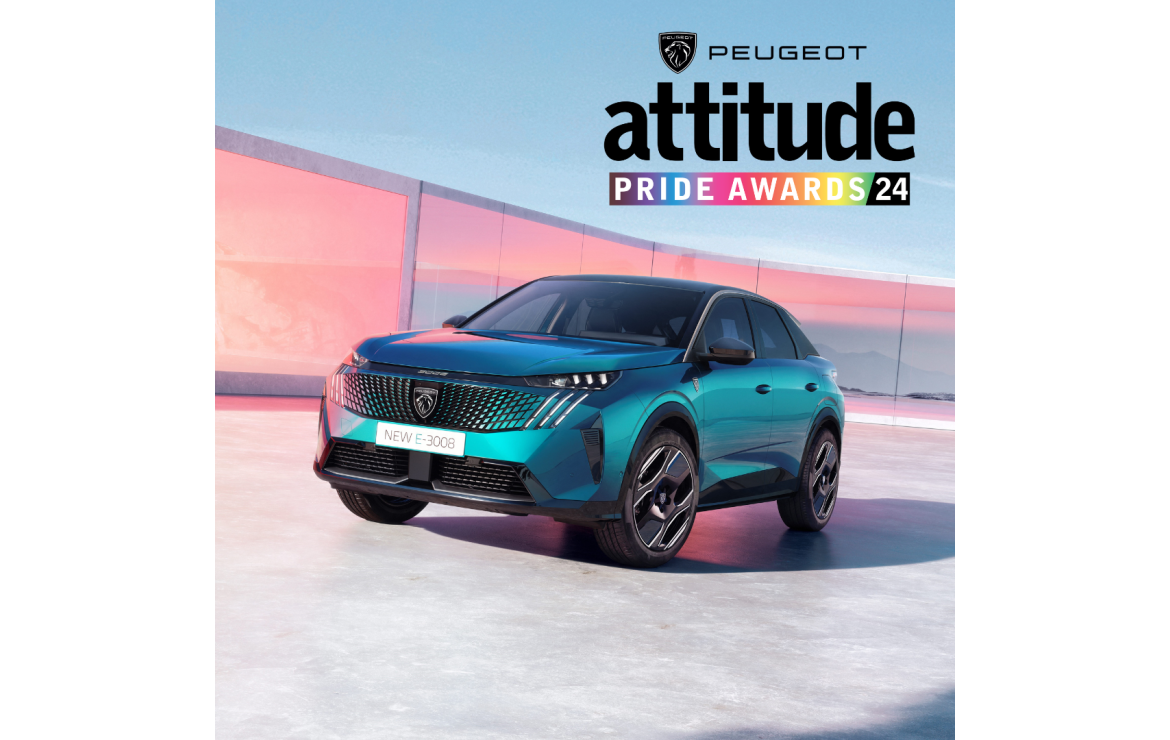- Ford announces first-in-class Tourneo Custom Plug-In Hybrid. Innovative people-mover designed to reduce local emissions; able to enter ultra-low-emission vehicle zones
- Plug-In Hybrid can be charged using mains electricity for targeted 50 km (31 mile) zero-emissions range, or 500 km (310 mile) range using 1.0-litre EcoBoost range extender
- Electrified powertrain requires no compromise to generous interior space. Versatile people-mover offers eight seats and unique-to-segment conference seating
- Customer deliveries of Tourneo Custom Plug-In Hybrid to start in late 2019
Ford today delivered the global public debut of the Tourneo Custom people-mover with an innovative new plug-in hybrid powertrain at a special “Go Further” event in Amsterdam, Netherlands.
Combining zero-emission driving capability and no range anxiety, the spacious eight-seat Tourneo Custom Plug-In Hybrid will be available to European customers from late 2019.
The first-in-class Tourneo Custom Plug-In Hybrid is among the first models unveiled as part of Ford’s strategy to deliver one of the most encompassing line-ups of electrified options for European customers. The vehicle can be charged with mains electricity for zero-emission driving – contributing to reduced local emissions and allowing the eight-seat people-mover to enter the growing number of ultra-low-emission vehicle zones being introduced across Europe.
The Tourneo Custom Plug-In Hybrid’s front wheels are driven exclusively by an electric motor/generator, powered by a 13.6 kWh lithium-ion battery pack. Ford’s multi-award-winning 1.0‑litre EcoBoost petrol engine acts as a range extender, working alongside regenerative braking enabled by the motor/generator to recharge the battery. The advanced hybrid powertrain targets a zero-emission driving range of up to 50 km (31 miles) or 500 km (310 miles) using the range extender. *
Like the diesel powered Tourneo Custom, the Plug-In Hybrid model retains the unique-to-segment ability to arrange the two rear rows in conference format for outstanding access and enhanced interaction between passengers – or in two rows of three seats facing forward.
“Uniquely innovative and flexible, the new Tourneo Custom Plug-In Hybrid can adapt to an unparalleled variety of use cases, giving owners and operators the advantage of being able to drive in ultra-low-emissions zones and still cover the same ground between battery charges as a traditionally-powered people-mover,” said Hans Schep, general manager, Commercial Vehicles, Ford of Europe. “Whether delivering executive shuttle services or ferrying large families, the Tourneo Custom Plug-In Hybrid will offer comfort and refinement while also contributing to improved local air quality in busy urban environments.”
Following the launch of the new Tourneo Custom at the start of 2018 – with an all-new premium interior and stylish new front-end design – Ford sold 17,100 Tourneo Custom people-movers during the year, a 28 per cent increase compared with the previous year.

Zero emissions. Zero range anxiety
The new Tourneo Custom Plug-In Hybrid uses a series-hybrid driveline configuration in which the front wheels are driven by an electric motor, rather than by the combustion engine. The compact, liquid-cooled battery pack is located under the floor of the passenger compartment, and is carefully positioned to preserve the generous interior space offered by the 2.0-litre EcoBlue-powered Tourneo Custom.
Four selectable EV modes enable the driver to choose how and when to use the available battery charge:
- EV Auto is intended to provide the optimum blend of performance and efficiency. The vehicle’s control algorithms monitor battery energy levels and the current driving scenario – such as whether motorway or stop-start driving – to decide whether to activate the range extender
- EV Now prioritises usage of stored battery energy, deactivating the range extender until battery levels reach a minimum state of charge for emissions-free driving
- EV Later prioritises the range extender and leverages regenerative charging to most efficiently maintain the current level of battery charge, ready for later use
- EV Charge utilises the range extender to top up the battery for when further EV Now travel is needed
Using a charging port located within the front bumper, the Tourneo Custom Plug-In Hybrid can be charged using a domestic 240-volt 10-amp power supply to achieve full charge in 5.5 hours, or using a commercial 240-volt 16-amp or 32-amp supply to achieve full charge in 3 hours.
Drivers can also choose the degree of energy recovery and braking assistance afforded by the regenerative charging system by selecting either Drive or Low on the gear selector.
Releasing the accelerator pedal in Low-mode increases the vehicle’s programmed deceleration, automatically illuminating the brake lights when necessary to warn drivers behind. The greater deceleration increases the amount of kinetic energy recovered and stored in the battery, extending potential electric range.
Inside the cabin, a power/charge gauge replaces the standard rev counter, and a smaller gauge for battery state of charge replaces the engine coolant temperature indicator. Trip computer functions are configured specifically for the hybrid powertrain. EV mode indicators, maintenance alerts and a warning when the vehicle is plugged into a charging point, appear on the instrument display cluster. A status graphic displaying distance-to-empty for both the battery and range extender is visible on all screen displays.

Luxury, refinement and connectivity
Available in upscale Titanium specification, the new Tourneo Custom Plug-In Hybrid has been engineered to provide superior levels of refinement and comfort. Premium standard equipment includes Ford’s voice-activated SYNC 3 communications and entertainment system, featuring an 8-inch colour touchscreen that can be controlled with pinch and swipe gestures, and delivering Apple CarPlay and Android Auto™ compatibility free of charge.
Standard FordPass Connect on-board modem technology enables each occupant to benefit from Wi-Fi connectivity with the ability to support up to 10 devices. A range of features can be accessed via the FordPass mobile app to make the vehicle ownership and operating experience easier and more productive, including Vehicle Status, Vehicle Locator and Remote lock/unlock.
Active Park Assist is also offered, which helps steer the vehicle into and out of parallel and perpendicular parking spaces, while the driver controls acceleration and braking.
Ford continues to explore the positive effects that the use of plug-in hybrid electric vehicles can have on cities, by running customer trials with prototype vehicles in London, U.K., to be followed by Cologne, Germany and Valencia, Spain later in 2019.
The company earlier this year announced that every Ford nameplate from the all-new Focus onwards will include an electrified option. This includes new nameplates and new versions of existing vehicles. From Fiesta to Transit, either a mild-hybrid, full-hybrid, plug-in hybrid or full battery electric option will be offered.
# # #
Tourneo Custom Plug-In Hybrid anticipated CO2 emissions from 75 g/km, fuel-efficiency from 3.3 l/100 km
Android and Android Auto are trademarks of Google Inc
* Officially homologated fuel-efficiency and CO2 emission figures will be published closer to on-sale date
The declared fuel/energy consumptions, CO2 emissions and electric range are measured according to the technical requirements and specifications of the European Regulations (EC) 715/2007 and (EC) 692/2008 as last amended. Fuel consumption and CO2 emissions are specified for a vehicle variant and not for a single car. The applied standard test procedure enables comparison between different vehicle types and different manufacturers. In addition to the fuel-efficiency of a car, driving behaviour as well as other non-technical factors play a role in determining a car’s fuel/energy consumption, CO2emissions and electric range. CO2 is the main greenhouse gas responsible for global warming.
Since 1 September 2017, certain new vehicles are being type-approved using the World Harmonised Light Vehicle Test Procedure (WLTP) according to (EU) 2017/1151 as last amended, which is a new, more realistic test procedure for measuring fuel consumption and CO2 emissions. Since 1 September 2018 the WLTP has begun replacing the New European Drive Cycle (NEDC), which is the outgoing test procedure. During NEDC Phase-out, WLTP fuel consumption and CO2 emissions are being correlated back to NEDC. There will be some variance to the previous fuel economy and emissions as some elements of the tests have altered i.e., the same car might have different fuel consumption and CO2 emissions.





